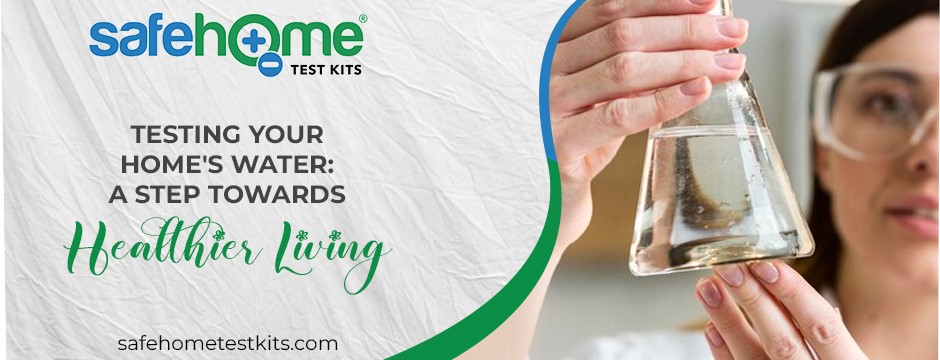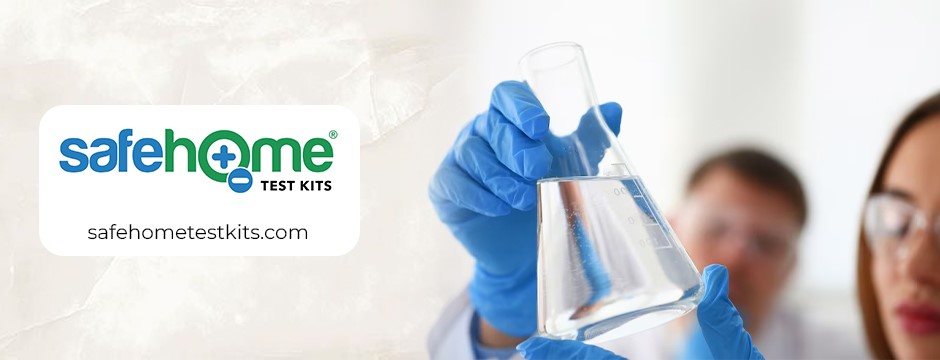Identifying Invisible Water Contaminants: Safe Home's Solutions

In our daily lives, we often take for granted the safety and purity of the water that flows from our taps. While municipal water treatment facilities work tirelessly to remove visible impurities and ensure compliance with regulatory standards, there exists a class of contaminants that evade detection by our senses: invisible water contaminants. These microscopic pollutants, although imperceptible to taste and odor, can pose significant health risks to consumers. In fact, they can lead to a range of health issues, from acute illnesses to chronic diseases. In this article, we will delve into the realm of invisible water contaminants, exploring their sources, effects on human health, and methods for detection and mitigation.
Sources of Invisible Water Contaminants
Invisible water contaminants encompass a wide array of pollutants originating from various sources, including industrial discharge, agricultural runoff, urban runoff, and natural geological formations. Common examples of invisible water contaminants include heavy metals (e.g., lead, arsenic, mercury), volatile organic compounds (VOCs), pesticides, pharmaceuticals, and microbial pathogens.
Industrial Discharge:
Industrial activities play a significant role in the contamination of water sources with invisible pollutants. Manufacturing processes, mining operations, and chemical production facilities release heavy metals and volatile organic compounds (VOCs) into water bodies through wastewater discharge and improper disposal practices. Heavy metals such as lead, arsenic, and mercury are common byproducts of industrial activities, posing serious health risks to humans and ecosystems alike. VOCs, including benzene and chloroform, are often used as solvents or in the production of plastics and textiles, and their release into waterways can adversely impact water quality and human health.
Agricultural Runoff:
Agricultural practices contribute to water contamination through the runoff of pesticides, fertilizers, and animal waste into surface and groundwater sources. Pesticides, designed to protect crops from pests and diseases, can leach into waterways during rainfall or irrigation, contaminating drinking water sources and harming aquatic ecosystems. Fertilizers containing nitrogen and phosphorus compounds contribute to nutrient pollution, leading to algal blooms and oxygen depletion in water bodies. Animal waste from livestock operations contains pathogens and nutrients that can contaminate water sources, posing risks to human health and aquatic life.
Urban Runoff:
Urbanization brings with it a host of pollutants that can contaminate waterways through stormwater runoff. Motor oil, gasoline, and other automotive fluids leak from vehicles and roadways, contributing to water pollution with petroleum hydrocarbons and heavy metals. Road salt, used for de-icing during winter months, can accumulate in surface water bodies, increasing salinity levels and harming freshwater organisms. Pet waste, containing pathogens and nutrients, poses health risks to humans and animals when washed into waterways during rainfall events.
Natural Geological Formations:
In addition to human activities, natural geological formations can contribute to water contamination with invisible pollutants. Certain geological formations may contain naturally occurring heavy metals, such as arsenic and uranium, which can dissolve into groundwater and contaminate drinking water sources. Radon, a radioactive gas released from the decay of uranium in soil and rock, can also infiltrate groundwater supplies, posing risks to human health when ingested or inhaled.
Effects on Human Health
The presence of invisible water contaminants in your drinking water can have severe health implications. Heavy metals like lead and arsenic are known to be neurotoxins and carcinogens, while VOCs such as benzene and chloroform can lead to liver damage and increased cancer risk. These are just a few examples of the potential dangers that invisible water contaminants can pose.
Pesticides and pharmaceuticals, although present in trace amounts, can disrupt endocrine function, compromise immune system function, and contribute to antibiotic resistance in humans. Microbial pathogens, such as bacteria, viruses, and protozoa, pose immediate health risks, causing gastrointestinal illnesses, respiratory infections, and other waterborne diseases.
Detection and Mitigation Strategies

Detecting invisible water contaminants requires specialized testing methods, such as Water Test Kits capable of identifying trace levels of pollutants. Advanced analytical techniques, including mass spectrometry, gas chromatography, and polymerase chain reaction (PCR), are employed to quantify contaminants accurately. Water quality monitoring programs conducted by regulatory agencies and environmental organizations play a vital role in identifying emerging contaminants and assessing their potential risks to public health.
Protecting yourself and your community from invisible water contaminants requires proactive measures. Consider installing point-of-use water filtration systems like activated carbon filters and reverse osmosis systems, which are effective in removing a wide range of contaminants. Regular maintenance and filter replacement are crucial for optimal performance. Additionally, source water protection measures such as land use planning and industrial pollution prevention programs are essential for preventing water source contamination.
In addition to filtration, your individual and community efforts are crucial for preventing contamination of water sources. Measures such as land use planning, agricultural best management practices, and industrial pollution prevention programs can significantly contribute to water safety. Remember, collaborative efforts among government agencies, industries, communities, and individuals are essential for safeguarding water quality and protecting public health. Your actions matter!
Invisible water contaminants present a significant challenge to ensuring the safety and purity of our drinking water supply. Despite being undetectable by taste and odor, these pollutants can have profound effects on human health and environmental integrity. By understanding the sources, effects, and detection methods of invisible water contaminants, we can take proactive steps to mitigate risks and safeguard the health and well-being of ourselves and future generations. Investing in water quality monitoring, filtration technologies, and source water protection initiatives is essential for achieving sustainable water management practices and ensuring access to clean and safe drinking water for all.
Safe Home® Pro Inspector Drinking Water Test Kits
Ensuring Water Purity with Precision
The Safe Home® Pro Inspector Drinking Water Test Kits stand as a testament to our commitment to accuracy and reliability in water testing. This comprehensive kit, designed to detect seven different contaminants, provides peace of mind regarding the water consumed by you and your loved ones. All tests are conducted within our certified laboratory, assuring the highest quality results that you can trust.
Comprehensive Contaminant Analysis:
Our Pro Inspector Drinking Water Test Kit covers a range of contaminants crucial for ensuring water safety:
- Bacteria: Total Coliform & E-Coli
- In-Organics: Nitrate-N, Nitrite-N
- Metals: Arsenic, Copper, and Lead
Certified Laboratory Testing:
Submitting your water sample to our lab within 24 hours of collection is required to maintain sample integrity. Our certified laboratory adheres to stringent EPA guidelines and meets the standards established by FHA, VA, and HUD for house inspections, guaranteeing the accuracy and reliability of your water test results.
Rapid Notification of Harmful Bacteria:
Should harmful bacteria be detected in your sample, rest assured that we will promptly notify you within 4 hours of test completion, either via phone or email. Your health and safety are our utmost priority.
Timely Reporting:
Expect your lab report to be emailed within 3-5 business days. Please note that business days do not include the time it takes for your water sample to reach our lab or account for weekends and holidays.
Have Confidence in Your Water Quality!
With the Safe Home® Pro Inspector Drinking Water Test Kits, you can confidently safeguard your health and make informed decisions regarding your water quality. Our EPA-certified laboratory’s testing procedures guarantee the accuracy of your results, ensuring the purity and safety of your water supply. Choose Safe Home® Pro Inspector and take control of your water quality today.
For reliable testing of your drinking water and peace of mind about its purity, explore the Safe Home® Pro Inspector Drinking Water Test Kit. Give us a call at 888-932-6699 or mail us at info@safehometestkits.com.
Product Link: Safe Home® Pro Inspector Drinking Water Test Kit


